The classic car investment landscape, once a niche pursuit for a select few, has undergone a fundamental transformation, shifting from a mere hobby to a serious alternative asset class. As traditional markets face stubborn inflation and macroeconomic headwinds, enthusiasts and investors alike are increasingly turning their gaze towards tangible assets. Vintage cars have emerged as a surprisingly robust performer, with the Frank Knight Wealth Report highlighting a stunning 185% growth in value over the last decade, outperforming even the S&P 500, art, wine, and watches. This underscores the potential for significant returns, especially for those with an eye for undervalued automotive gems.
Identifying tomorrow’s icons requires looking beyond the obvious choices and diving into modern classics currently flying under the radar. Cars flagged as “future classics” just five years ago have already demonstrated dramatic appreciation, proving that success lies in discerning models with genuine potential that haven’t yet captured mainstream attention. This isn’t just about financial gains; it’s about appreciating automotive history, embracing distinctive styling, and enjoying visceral experiences modern vehicles can’t replicate.
In this comprehensive exploration, we delve into 14 vehicles offering a unique blend of rarity, performance, and design appeal, all without demanding premium price tags. These machines represent the end of an era, boast irreplaceable driving dynamics, or possess overlooked engineering prowess. Prepare to discover the next wave of classic car appreciation, starting with the first seven magnificent machines poised for significant appreciation over the next 3-5 years.
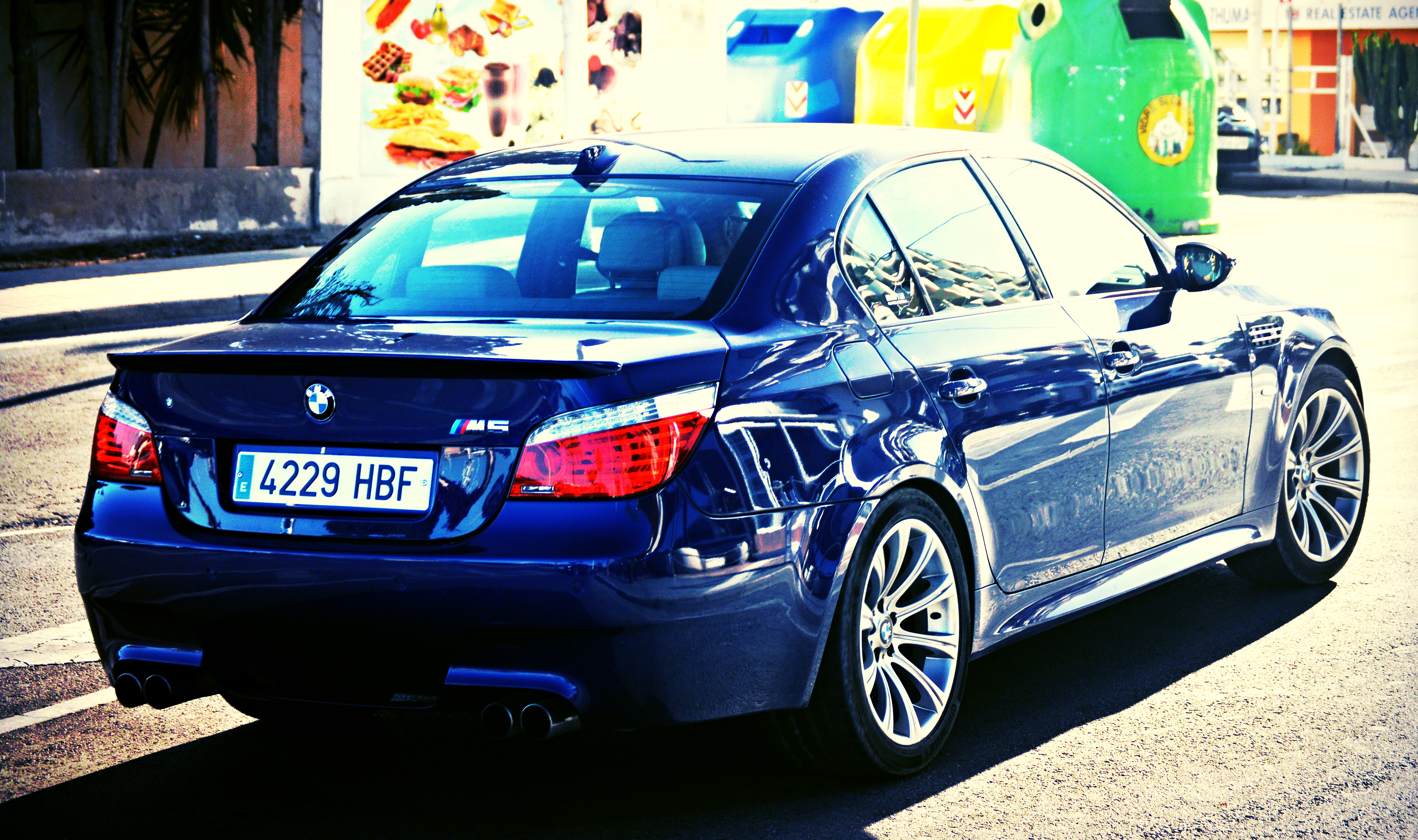
1. **BMW E60 M5 V10**
The BMW E60 M5 V10 stands as a monumental testament to a bygone era, representing the last naturally aspirated M5 and the only production car to feature a Formula 1-derived V10 engine. This 500-horsepower masterpiece, with its high-revving character, embodies everything the automotive world is progressively losing amidst the march towards electrification. Its audacious engineering and complex powertrain truly set it apart in the performance sedan segment.
Purists initially dismissed the E60 M5 due to its intricate SMG transmission and perceived complexity, leading to an initial undervaluation. The maintenance reputation, perhaps exaggerated, scared off many buyers. However, proper examples with comprehensive service histories are proving remarkably reliable, showing that much concern was rooted in neglect. This lingering perception keeps prices artificially low for many examples.
The opportunity for appreciation is clear. As the gap between neglected and meticulously maintained cars widens, clean, documented examples remain accessible, starting from around £18,000 in the UK or $22,000 in the USA. The V10’s uniqueness and BMW’s M division heritage make significant appreciation probable. This car offers an irreplaceable driving experience, cementing its status as a definitive end-of-era model.
Car Model Information: 2025 Alfa Romeo Stelvio Sprint
Name: BMW 5 Series (E60/E61)
Manufacturer: BMW
Production: July 5, 2003 – 2010
ModelYears: 2004–2010
Assembly: Unbulleted list
Designer: Unbulleted list
Class: Executive car
Layout: Rear-wheel drive,All-wheel drive
BodyStyle: sedan (car),station wagon
Engine: Unbulleted list
Transmission: unbulleted list
Wheelbase: Convert,Convert
Length: cvt,cvt
Width: Convert
Height: Convert
Weight: Convert
Related: BMW 6 Series (E63)
Predecessor: BMW 5 Series (E39)
Successor: BMW 5 Series (F10)
ModelCode: E60 (Saloon),E61 (Touring)
Categories: 2010s cars, All Wikipedia articles written in British English, All articles with dead external links, All articles with unsourced statements, Articles with dead external links from May 2021
Summary: The fifth generation of the BMW 5 Series executive cars consists of the BMW E60 (saloon version) and BMW E61 (wagon version, marketed as ‘Touring’). The E60/E61 generation was produced by BMW from 2003 to 2010 and is often collectively referred to as the E60.
The E60 generation introduced various new electronic features, including the iDrive infotainment system, head-up display, active cruise control, active steering, adaptive headlights, night vision, lane departure warning and voice control. The E60 was the first 5 Series to be available with a turbocharged petrol engine, a 6-speed automatic transmission and regenerative braking.
The M5 model was introduced in 2005 and is powered by the BMW S85 V10 engine. It was sold in the saloon and wagon body styles, with most cars using the 7-speed SMG III transmission. It was the first and only M5 model to be sold with a V10 engine.
In January 2010, the BMW 5 Series (F10) began production as the successor to the E60.
Get more information about: BMW 5 Series (E60)
Buying a high-performing used car >>>
Brand: BMW Model: E60 M5
Price: $54,000 Mileage: 889 mi.
Read more about: Remember the Glory Days? 14 German Sedans That Were the Absolute Icons of Status and Executive Commute in the 2000s and Early 2010s

2. **Porsche Cayman 987.1**
For too long, the original Porsche Cayman 987.1 languished in the shadow of the 911, often branded the “poor man’s Porsche.” This reputation, despite offering what many consider superior handling dynamics, has kept prices artificially low. It delivers authentic Porsche DNA, meticulous engineering, and driving purity that belies its accessible price point.
Its undervaluation stems from the 911’s iconic status, which overshadowed the Cayman’s objective superiority in chassis balance and pure driving engagement. Early IMS bearing concerns, largely resolved in the 987.1, created unnecessary fear. These factors collectively prevented the market from fully appreciating the Cayman for its inherent brilliance.
However, the tide is turning. Driving enthusiasts are recognizing the Cayman’s mid-engine advantages. As 911 prices soar beyond reach, the Cayman presents a compelling alternative, offering genuine Porsche experience at a rational price. The S variants with the 3.4-liter engine represent outstanding value. Good examples start from around £15,000 in the UK or $18,000 in the USA, making them a smart acquisition.
Car Model Information: 2008 Porsche Cayman Base
Name: unbulleted list
Caption: Porsche Boxster Spyder (718)
Manufacturer: Porsche
Aka: unbulleted list
Production: unbulleted list
Assembly: unbulleted list
Class: Sports car
BodyStyle: unbulleted list
Related: unbulleted list
Layout: Rear mid-engine, rear-wheel drive layout
Predecessor: Porsche 968
Categories: All Wikipedia articles written in British English, All articles needing additional references, All articles with dead external links, All articles with unsourced statements, Articles needing additional references from August 2025
Summary: The Porsche Boxster and Cayman are mid-engine two-seater sports cars manufactured and marketed by German automobile manufacturer Porsche across four generations—as a two-door, two-seater roadster (Boxster) and a three-door, two-seater fastback coupé (Cayman).
The first generation Boxster was introduced in 1996; the second generation Boxster and the Cayman arrived in late 2005; and the third generation launched in 2012. Since the introduction of the fourth generation in 2016, the two models have been marketed as the Porsche 718 Boxster and Porsche 718 Cayman.
The nameplate Boxster is a portmanteau of boxer, a reference to its flat or boxer engine, and Speedster, a nod to the original Porsche Speedster of the 1950’s. The nameplate Cayman is an alternative spelling of caiman, a member of the alligator family.
In May 2025 Porsche North America confirmed the rumours that global “production for all current 718 Boxster and 718 Cayman variants, including RS models, is scheduled to end in October of” 2025. Porsche CEO Oliver Blume has confirmed future production of full-electric replacements but said they will arrive in the “medium term.”
Get more information about: Porsche Boxster and Cayman
Buying a high-performing used car >>>
Brand: Porsche Model: Cayman
Price: $23,995 Mileage: 61,789 mi.
Read more about: 9 Undervalued Classic Sports Cars: Why Savvy Enthusiasts Are Snapping Up These Overlooked Gems

3. **Mercedes C63 AMG W204**
The Mercedes C63 AMG W204 houses Mercedes’ legendary 6.2-liter naturally aspirated V8 – the same engine that powered the SLS AMG supercar. This direct connection bestows upon the W204 C63 an almost supercar-level pedigree, yet it remains one of the most remarkably undervalued AMG cars. It represents a raw, unadulterated era of AMG performance, characterized by immense power and a captivating soundtrack.
Its undervaluation stems from being overshadowed by the E63 AMG and competing with BMW’s M3. The C63 never garnered the widespread recognition its superb engineering deserved. Subsequent turbocharged generations, while quicker, often lack the raw, emotive character and naturally aspirated symphony of this masterpiece, making the W204 a distinct anomaly.
The opportunity is profound, as the W204 C63 is the last naturally aspirated C63, marking the end of AMG’s golden era. Its hand-built engine’s lineage to the SLS provides supercar pedigree at a fraction of the cost, making it an exceptionally compelling investment. Performance pack examples, crucially including the limited-slip differential, are particularly desirable, with good examples beginning at approximately £25,000 in the UK or $30,000 in the USA.
Car Model Information: 2025 Alfa Romeo Stelvio Sprint
Name: Mercedes-Benz C-Class (W204)
Manufacturer: Daimler AG
ModelCode: ubl
Production: Unbulleted list
ModelYears: 2008–2014,2012–2015 (coupe)
Assembly: Unbulleted list
Designer: Karlheinz Bauer, Peter Pfeiffer
Class: Compact executive car
BodyStyle: Unbulleted list
Layout: Front-engine, rear-wheel-drive,Front-engine, all-wheel-drive
Engine: Unbulleted list
Transmission: Unbulleted list
Wheelbase: 2760 mm
Abbr: on
Length: Unbulleted list
Width: Unbulleted list
Height: 1447 mm
Related: Mercedes-Benz E-Class (C207),Mercedes-Benz GLK-Class
Predecessor: Mercedes-Benz C-Class (W203),Mercedes-Benz CLC-Class (CL203)
Successor: Mercedes-Benz C-Class (W205)
Categories: 2010s cars, All Wikipedia articles written in British English, All articles with dead external links, Articles with dead external links from November 2010, Articles with short description
Summary: The Mercedes-Benz C-Class (W204) is the third generation of the Mercedes-Benz C-Class. It was manufactured and marketed by Mercedes-Benz in sedan/saloon (2007–2014), station wagon/estate (2008–2014) and coupé (2011–2015) bodystyles, with styling by Karlheinz Bauer and Peter Pfeiffer.
The C-Class was available in rear- or all-wheel drive, the latter marketed as 4MATIC. The W204 platform was also used for the E-Class Coupé (C207).
Sub-models included the C 200 Kompressor, the C 230, the C 280, the C 350, the C 220 CDI, and the C 320 CDI. The C 180 Kompressor, C 230, and C 200 CDI were available in the beginning of August 2007. The W204 station wagon was not marketed in North America.
Production reached over 2.4 million worldwide, and the W204 was the brand’s best selling vehicle at the time.
Get more information about: Mercedes-Benz C-Class (W204)
Buying a high-performing used car >>>
Brand: Mercedes Model: C63 AMG
Price: $54,000 Mileage: 889 mi.
Read more about: 9 Undervalued Classic Sports Cars: Why Savvy Enthusiasts Are Snapping Up These Overlooked Gems

4. **Jaguar XK X100**
Ian Callum’s masterful design of the Jaguar XK X100 skillfully blended the timeless E-Type DNA with modern reliability, creating what many consider the most beautiful sports car of the late 1990s. This elegant grand tourer, with its flowing lines, garnered significant critical acclaim and benefited from improved Ford-era dependability, promising a more ownership-friendly experience.
Despite its aesthetic appeal and improved competence, the X100 continues to be surprisingly undervalued. Jaguar’s historical reliability reputation, though largely addressed, casts a long shadow. Compounding this, the abundance of examples means buyers can be selective, which inadvertently suppresses prices by reducing perceived rarity.
The opportunity presented by the X100 is now more compelling. As contemporary German sports cars appreciate rapidly, the XK’s combination of stunning design, grand touring capability, and relative rarity becomes increasingly attractive. For exhilarating performance, XKR variants with the supercharged V8 offer exceptional value. Good examples are accessible from £12,000 in the UK or $15,000 in the USA, making them an elegant and astute investment.
Car Model Information: 2025 Alfa Romeo Stelvio Sprint
Sp: uk
Name: Jaguar XK8,Jaguar XKR
Caption: Jaguar XKR Coupé
Manufacturer: Jaguar Cars
ModelCode: X100
Production: 1996–2006
ModelYears: 1996–2006
Assembly: Coventry,England
Predecessor: Jaguar XJS
Successor: Jaguar XK (X150)
Class: Grand tourer
BodyStyle: coupé,convertible (car)
Layout: Front-engine, rear-wheel drive layout
Platform: Jaguar XJS (modified)
Engine: unbulleted list
Transmission: ZF 5HP24 transmission,Mercedes-Benz 5G-Tronic transmission,ZF 6HP26 transmission
Wheelbase: 101.9 in
Abbr: on
Order: flip
Length: 1996–2004: {{convert,187.4,in,mm,1,abbr=on,order=flip
Width: unbulleted list
Height: 1996–1998 Coupe and 1999–2006 XK8 Convertible: {{convert,1295,mm,in,1,abbr=on
Related: Aston Martin DB7,Jaguar XJ (X308)
Designer: Fergus Pollock
Categories: 2000s cars, All Wikipedia articles written in British English, All articles with unsourced statements, Articles with short description, Articles with unsourced statements from April 2019
Summary: The Jaguar XK8 (project code X100) is a grand tourer launched by Jaguar Cars in 1996, and was the first generation of a new XK series. The XK8 was available in two-door coupé or two-door convertible body styles with the new 4.0-litre Jaguar AJ-V8 engine. In 1998, the XKR was introduced with a supercharged version of the engine. In 2003, the engines were replaced by the new 4.2-litre AJ34 engines in both the naturally aspirated and supercharged variations. The first-generation of the XK series shares its XJS-derived platform with the Aston Martin DB7, with both cars tracing their history back to an abandoned Jaguar development study in the mid-1980s known as XJ41/XJ42, which had been mooted to be known as the F-Type.
One of the revisions is the use of the second generation of Jaguar’s independent rear suspension unit, taken from the Jaguar XJ (XJ40). Development began in 1992, with design work starting earlier in late 1991. By October 1992 a design was chosen and later frozen for production in 1993. Prototypes were built from December 1993 after the X100 was given formal approval and design patents were filed in June 1994. Development concluded in 1996, with the car being unveiled in March of that year and going on sale from October 1996.
Get more information about: Jaguar XK (X100)
Buying a high-performing used car >>>
Brand: Jaguar Model: XK X100
Price: $54,000 Mileage: 889 mi.
Read more about: 13 Iconic 1980s Classics: Unearthing Automotive Treasures Whose Values Are Soaring for Collectors

5. **BMW Z4 E85**
Chris Bangle’s design for the BMW Z4 E85 initially polarized opinion. However, time has been remarkably kind, allowing its distinctive aesthetics to mature into a handsome statement. More critically, the E85 stands as one of the last bastions of the pure BMW roadster experience, a visceral connection untainted by pervasive electronic intervention.
The undervaluation can be traced to the enduring popularity of its predecessor, the Z3, which overshadowed the Z4’s initial impact. Many enthusiasts dismissed the Z4 as less “pure,” overlooking its superior dynamics, enhanced refinement, and improved build quality. This initial reluctance significantly contributed to suppressed market values.
A significant shift is underway as Z3 prices climb, prompting new buyers to discover the Z4’s advantages: more space, better refinement, and improved performance. The 3.0si straight-six variants, in particular, offer the classic, sonorous BMW engine note that has vanished from modern offerings. With good examples starting from £8,000 in the UK or $12,000 in the USA, the E85 Z4 represents an increasingly attractive and authentically engaging investment.
Car Model Information: 2008 BMW Z4 3.0si Roadster
Name: BMW Z
Production: nobr,nobr
Caption: 2021 BMW Z4 M40i
Class: Sports car
BodyStyle: roadster (automobile),coupé
Layout: Rear-wheel drive
Categories: All articles with dead external links, Articles with dead external links from July 2025, Articles with dead external links from October 2019, Articles with permanently dead external links, Articles with short description
Summary: The BMW Z models are a line of roadsters manufactured by German automaker BMW. The Z stands for Zukunft (German for future), and has been produced in four different series with six generations consisting of roadster, coupé, sports car, and concept variants.
The introduction of the M Coupé and M Roadster in the Z3 line marked the first of the Z series to have a high-performance BMW M variant. The first generation Z4 also continued to offer M Coupé and M Roadster variants. The current Z4 (G29) uses BMW’s (B58B30) inline-six, its platform is the basis for the current Toyota Supra.
Get more information about: BMW Z
Buying a high-performing used car >>>
Brand: BMW Model: Z4
Price: $23,000 Mileage: 73,683 mi.
Read more about: 9 Undervalued Classic Sports Cars: Why Savvy Enthusiasts Are Snapping Up These Overlooked Gems

6. **Audi TT Mk1 Quattro**
The original Audi TT Mk1 Quattro transformed from a fashion accessory into a design icon, whose groundbreaking aesthetics carved a permanent niche in automotive history. Yet, despite its cultural significance and influence on car design, market values for the first-generation TT have, for a period, failed to reflect its true stature. Both 1.8T and V6 variants offer genuine performance capabilities matching its timeless visual appeal.
Initial perceptions played a crucial role in its undervaluation, with early critiques dismissing the TT as style-over-substance. This prejudice created a lasting stigma. Furthermore, high production numbers and a modification culture reduced the pool of truly original examples. This abundance of modified cars, without proportional value increases for pristine ones, suppressed overall market appreciation.
Today, design appreciation is finally overcoming historical performance prejudices. The clean, Bauhaus-inspired lines are being rediscovered and celebrated. Critically, Quattro models (225hp 1.8T or 240hp V6) provide all-weather capability modern buyers increasingly value, making them practical classics. Unmolested examples, retaining factory specification, are becoming genuinely rare and desirable. Good examples can be found from £7,000 in the UK or $10,000 in the USA.
Car Model Information: 2024 Ford Mustang EcoBoost Premium
Name: Audi TT
Caption: 2019 Audi TT Sport 40 TFSi
Manufacturer: Audi AG
Production: October 1998 – November 2023
ModelYears: 1999–2023
Assembly: Győr
Class: Sports car
BodyStyle: coupé
Layout: unbulleted list
Platform: Volkswagen Group A platform,Volkswagen Group MQB platform
Sp: uk
Categories: 2+2 coupés, 2000s cars, 2010s cars, 2020s cars, All-wheel-drive vehicles
Summary: The Audi TT is a sports car manufactured and marketed by Audi from 1998 to 2023 across three generations. Its bodystyles included a coupé with a 2+2 seating arrangement and a two-seater roadster. For each of its three generations, the TT has been based on consecutive generations of Volkswagen’s “Group A” platforms, starting with its “PQ34” fourth generation. The TT shares powertrain and suspension layouts with its platform mates, including the Audi A3, like a transversely mounted front-engine, powering front-wheel drive or four-wheel drive, and fully independent suspension using MacPherson struts in front.
The TT’s first two generations were assembled by Audi’s Hungarian subsidiary, one of the world’s largest engine manufacturing plants, using bodyshells manufactured and painted at Audi’s Ingolstadt plant and parts made entirely by the Hungarian factory for the third generation. The last of the 662,762 Audi TTs was manufactured in November 2023.
Get more information about: Audi TT
Buying a high-performing used car >>>
Brand: Audi Model: TT Mk1 Quattro
Price: $31,463 Mileage: 33,139 mi.
Read more about: Beyond the Commute: 14 Cars That Redefine Driving Fun and Handling Perfection for Enthusiasts
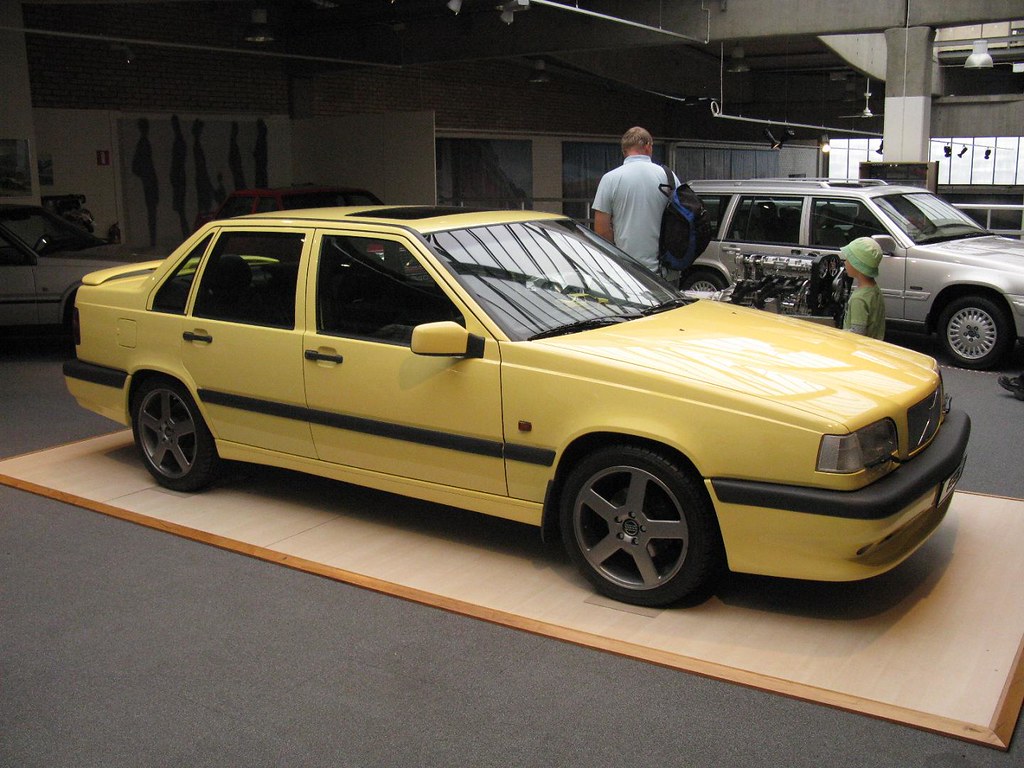
7. **Volvo 850 T-5R**
The Volvo 850 T-5R marks a pivotal and successful moment in Volvo’s history, representing its dramatic transformation from a safety-first image to a formidable performance powerhouse. This evolution culminated in BTCC glory, fundamentally altering perceptions of the conservative Swedish marque. Produced in strictly limited numbers, the T-5R possesses genuine exclusivity.
Its continued undervaluation stems from Volvo’s deeply ingrained conservative image, which doesn’t align with traditional collector expectations. Moreover, the 850’s practical estate body, while brilliantly disguised, camouflages its genuine high-performance capabilities and significant motorsport heritage. This discrepancy between perception and reality has kept market value artificially suppressed.
The opportunity to invest in a Volvo 850 T-5R is now ripe. With only a few hundred remaining, their rarity is a powerful driver of appreciation. The strong BTCC connection provides authentic motorsport heritage, increasingly valued by discerning collectors. As the broader market for 1990s performance cars trends upward, the T-5R’s unique character and backstory ensure it stands out as an exceptional and highly investable classic. Good examples are available from £12,000 in the UK or $15,000 in the USA.
Continuing our in-depth exploration into the burgeoning world of classic car investments, we shift our focus to an additional seven remarkable vehicles poised for significant appreciation. These machines, like their predecessors, embody a unique combination of engineering prowess, distinctive styling, and underappreciated market positions, making them ideal targets for savvy collectors and investors. The next wave of future classics awaits, offering an unparalleled driving experience alongside compelling financial potential. They represent the continuing evolution of what makes a classic truly investable, moving beyond mere nostalgia to genuine automotive significance.
Car Model Information: 2024 Ford Mustang EcoBoost Premium
Name: Volvo 850
Caption: 1994 Volvo 850 saloon
Manufacturer: Volvo Cars
Production: 1991–1997 (716,903 units)
ModelYears: 1992–1997
Assembly: Torslanda
Predecessor: Volvo 200 Series
Successor: Volvo S70
Class: Compact executive car
BodyStyle: sedan (car),language=en,url=https://www.volvocars.com/intl/about/our-company/heritage/heritage-models/55-850-sedan,title=Volvo 850 Sedan,publisher=Volvo Car Corporation,website=www.volvocars.com,access-date=2018-04-13,url-status=dead,archive-date=2017-11-07,archive-url=https://web.archive.org/web/20171107014254/https://www.volvocars.com/intl/about/our-company/heritage/heritage-models/55-850-sedan
Layout: Front-engine, front-wheel-drive layout,front-wheel drive
Platform: Volvo P80 platform
Engine: Petrol:,Straight-five engine,(93kW–186kW),Diesel:,Straight-five engine,(103kW)
Transmission: ubl
Wheelbase: 2664 mm
Abbr: on
Length: saloon: {{convert,4661,mm,1,abbr=on
Width: 1760 mm
Height: 1991–1997 saloon:,{{convert,1415,mm,1,abbr=on
Weight: saloon:
Designer: Jan Wilsgaard
Sp: uk
Categories: All-wheel-drive vehicles, All articles with unsourced statements, Articles with short description, Articles with unsourced statements from January 2012, CS1 Dutch-language sources (nl)
Summary: The Volvo 850 is a compact executive car that was produced by the Swedish manufacturer Volvo Cars from 1991 until 1997. Designed by Jan Wilsgaard, the car was introduced in a saloon body style; an estate style was introduced in 1993.
The Volvo 850 was shown for the first time in June 1991, and the car marked a departure for Volvo, featuring multiple unprecedented features for the company; these included a transverse 5-cylinder engine driving the front wheels, a Delta-link rear axle, a side impact protection system, and a self-adjusting front seat belt mechanism.
The Volvo 850 was succeeded by the Volvo S70 and Volvo V70.
Get more information about: Volvo 850
Buying a high-performing used car >>>
Brand: Volvo Model: 850 T-5R
Price: $31,463 Mileage: 33,139 mi.
Read more about: Ignored No More: Unearthing the 16 Most Underrated Foreign Classic Cars of the 1990s

8. **Honda Civic Type R EP3**
The Honda Civic Type R EP3, an icon that brought Honda’s legendary Type R philosophy to the mainstream, democratized access to the exhilarating world of VTEC high-revving excitement. This hot hatch played a pivotal role in establishing the modern hot hatch template, a significance that is only now truly beginning to be recognized by the broader automotive community. Its direct, engaging driving experience, combined with Honda’s renowned engineering, made it an instant enthusiast favorite upon its release, delivering a raw, unadulterated connection between driver and machine.
Its initial undervaluation largely stemmed from a pervasive modification culture and younger ownership demographics, which collectively reduced the population of pristine, original examples. For many years, the EP3 was often dismissed as merely a “boy racer” car, a perception that regrettably overshadowed its genuine engineering significance and formidable performance capabilities. This casual dismissal kept its market value artificially suppressed, allowing discerning buyers to acquire these gems at incredibly accessible prices, an opportunity that is rapidly diminishing.
However, the tide is undeniably turning, and the opportunity for appreciation is becoming increasingly evident. Original examples, untouched by modifications, are now genuinely scarce, making them highly sought after as the modification legacy reduces the available stock of unmolested cars. Crucially, the naturally aspirated VTEC experience, a hallmark of the EP3, is virtually extinct in modern cars, rendering its visceral character irreplaceable and ensuring its enduring appeal to purists. Good examples can currently be found starting from around £10,000 in the UK or $13,000 in the USA, offering an enticing entry point into a rapidly appreciating segment.
Car Model Information: 2024 Ford Mustang EcoBoost Premium
Name: Honda Civic Type R
Caption: Honda Civic (eleventh generation)
Manufacturer: Honda
Production: September 1997 – present
Class: Sport compact
BodyStyle: hatchback
Layout: Front-engine, front-wheel-drive layout
Related: Honda Civic
Categories: 2000s cars, 2010s cars, 2020s cars, All Wikipedia articles written in American English, All articles with unsourced statements
Summary: The Honda Civic Type R (Japanese: ホンダ・シビックタイプR, Hepburn: Honda Shibikku Taipuāru) is a series of hot hatchback and sports sedan models based on the Civic, developed and produced by Honda since September 1997. The first Civic Type R was the third model to receive Honda’s Type R badge (after the NSX and Integra). Type R versions of the Civic typically feature a lightened and stiffened body, specially tuned engine, and upgraded brakes and chassis, and are offered only in five- or six-speed manual transmission. Like other Type R models, red is used in the background of the Honda badge to distinguish it from other models.
Get more information about: Honda Civic Type R
Buying a high-performing used car >>>
Brand: Honda Model: Civic Type R
Price: $31,463 Mileage: 33,139 mi.
Read more about: 9 Undervalued Classic Sports Cars: Why Savvy Enthusiasts Are Snapping Up These Overlooked Gems
9. **Saab 9-3 Viggen**
The Saab 9-3 Viggen stands as a poignant automotive milestone, representing Saab’s final, defiant performance car before General Motors’ complete takeover and the eventual demise of the brand. This turbocharged marvel encapsulates the very essence of Swedish automotive independence, showcasing a distinctive design language and a unique driving character that, regrettably, vanished with the brand itself. It is a powerful reminder of Saab’s innovative spirit and engineering individuality, a true testament to its Scandinavian heritage.
Its undervaluation largely traces back to the lingering fears regarding parts supply following Saab’s demise, a concern that understandably suppressed values for a considerable period. Furthermore, Saab’s quirky reputation, while endearing to its loyalists, often didn’t align with the more traditional collector preferences for established German or British marques. These factors combined to keep the Viggen flying under the radar, preventing its true significance from being widely acknowledged by the wider collector community.
Yet, extinct brands often cultivate their own unique collector appeal, and the Viggen is a prime example of this phenomenon, with examples becoming increasingly irreplaceable. Its limited production numbers, distinctive character, and undeniable “end-of-era” significance mirror classic collectibility patterns seen in other marques. Fortunately, robust specialist support networks have emerged, ensuring the long-term viability and maintainability of these rare cars, thus mitigating earlier fears. With good examples starting from around £8,000 in the UK or $10,000 in the USA, the Viggen presents a compelling investment for those who appreciate unique automotive history.
Car Model Information: 2024 Ford Mustang EcoBoost Premium
Name: Saab 9-3
Caption: 2008–2009 Saab 9-3 sedan
Manufacturer: General Motors
Production: 1998–2014
Layout: Front-engine, front-wheel-drive layout
Predecessor: Saab 900
Successor: NEVS 9-3EV
Class: Compact executive car
Categories: 2000s cars, 2010s cars, All-wheel-drive vehicles, All articles with unsourced statements, Articles with Danish-language sources (da)
Summary: The Saab 9-3 (pronounced nine-three) is a compact executive car initially developed and manufactured by the Swedish automaker Saab.
The first generation 9-3 (1998–2003) is based on the GM2900 platform, changing to the GM Epsilon platform with the introduction of the second-generation car (2003–2012). Other vehicles using this platform include the Opel Vectra, Chevrolet Malibu, and Cadillac BLS.
National Electric Vehicle Sweden (NEVS), Saab’s then parent company briefly assembled a few 9-3 sedans during 2013 and 2014.
Get more information about: Saab 9-3
Buying a high-performing used car >>>
Brand: Saab Model: 9-3 Viggen
Price: $31,463 Mileage: 33,139 mi.
Read more about: 9 Undervalued Classic Sports Cars: Why Savvy Enthusiasts Are Snapping Up These Overlooked Gems
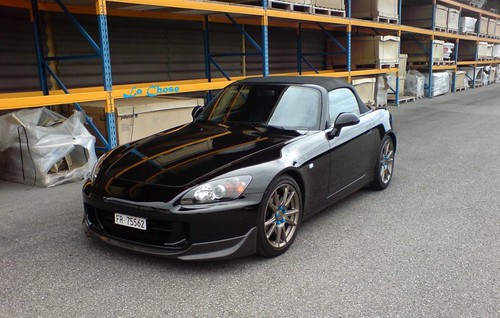
10. **Honda S2000 (2000-2003)**
The Honda S2000, particularly the early AP1 models produced between 2000 and 2003, is truly a free-revving anomaly in a market increasingly dominated by technologically heavy performance cars. As Terry Shea, Marketplace Editor at Hemmings, aptly describes, its staggering 9,000 rpm redline and classic roadster styling allow it to fill a critical gap in today’s electric-first landscape. This car is a pure, unadulterated ode to driving excitement, delivering an experience that feels increasingly rare and cherished.
For years, the S2000 was appreciated by enthusiasts but perhaps not fully recognized for its long-term investment potential outside of that core group. Its focus on a high-strung, naturally aspirated four-cylinder engine, while lauded by purists, didn’t always resonate with a broader market accustomed to larger displacement or forced induction. This created a period where its values remained stable but undervalued relative to its exceptional engineering and driving dynamics, missing its broader appeal.
However, as Shea highlights, “Nothing else on the road drives quite like it, and as buyers realize what’s been lost, prices are catching up.” The S2000 offers an engaging, tactile driving experience that modern vehicles struggle to replicate. Its direct steering, precise manual gearbox, and that incredible engine note at full throttle make it genuinely unique. Collectors seeking an analog, high-performance roadster with bulletproof Honda reliability are now eagerly turning their attention to the S2000, driving its values upwards as its irreplaceable character becomes more apparent and sought after.
Car Model Information: 2004 Honda S2000 Base
Name: Honda S2000
Manufacturer: Honda
Production: 1999–2009 (110,673 produced)
Class: Sports car
Layout: Front-engine, rear-wheel-drive layout#Front mid-engine, rear-wheel-drive layout
BodyStyle: Roadster (automobile)
Designer: Shigeru Uehara
Caption: 2002 Honda S2000 (AP1)
Predecessor: Honda S800
Categories: 2000s cars, All articles containing circular references, All articles lacking reliable references, Articles lacking reliable references from May 2024, Articles with short description
Summary: The Honda S2000 is a front-mid engine open top sports car that was manufactured by Japanese automobile manufacturer Honda, from 1999 until 2009. First shown as a concept car called the SSM at the Tokyo Motor Show in 1995, the production version was launched on April 15, 1999, to celebrate the company’s 50th anniversary. The S2000 is named for its engine displacement of two liters, while “S” stood for “sports” carrying on in the tradition of the S500, S600, and S800 roadsters of the 1960s.
Several revisions were made throughout the car’s production life, including changes to the engine, gearbox, suspension, interior and exterior. Officially two variants exist: the initial launch model was given the chassis code AP1; though cosmetically similar, the facelifted version, known as the AP2 in North America and Japan, incorporated significant changes to the drivetrain and suspension. Production of the S2000 ceased on August 19, 2009.
The Honda S2000 was notable for its exceptional specific power output of about 92 kW (124 hp) per liter, or about two horsepower per cubic inch, the highest of any mass production, naturally aspirated car, until 2010.
Get more information about: Honda S2000
Buying a high-performing used car >>>
Brand: Honda Model: S2000
Price: $28,995 Mileage: 72,541 mi.
Read more about: The Smart Money’s Secret: 8 Undervalued Classic Cars Experts Say Are Poised for Significant Appreciation
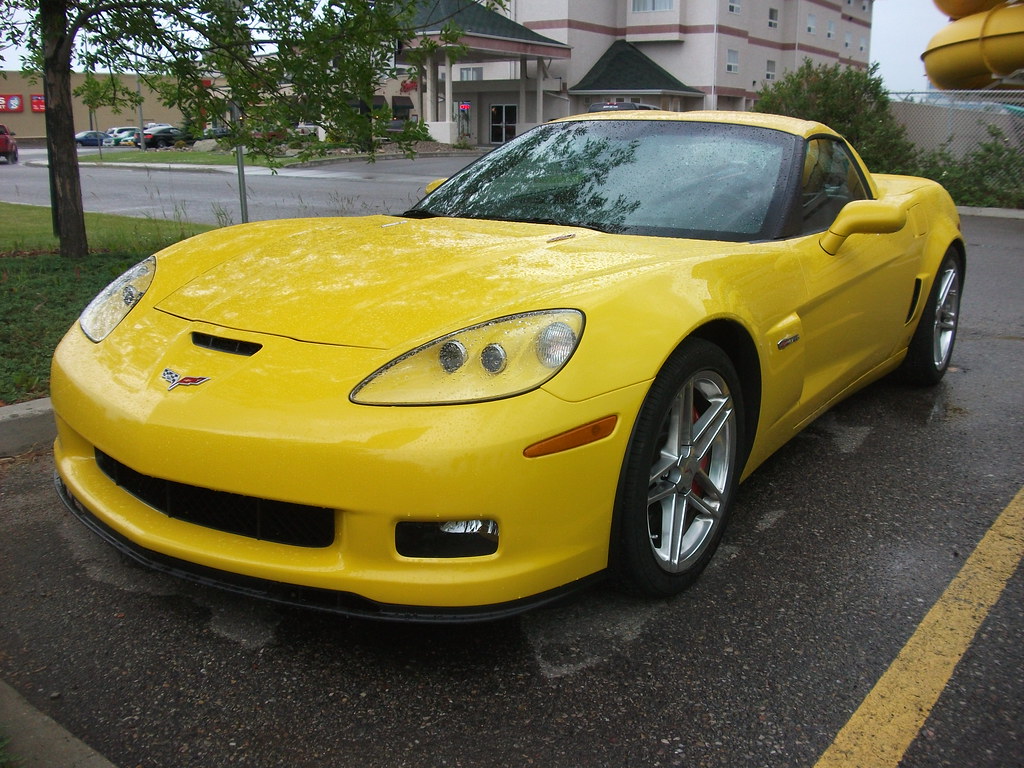
11. **Chevrolet Corvette Z06 (2001-2004)**
The C5-generation Chevrolet Corvette Z06, spanning from 2001 to 2004, stands as a prime example of accessible performance that simultaneously offers significant long-term upside in the classic car market. Terry Shea from Hemmings identifies it as an outstanding opportunity, emphasizing its core attributes that define it as a true enthusiast’s car. Each Z06 during this period featured the legendary LS6 V8 engine, mated exclusively to a six-speed manual transmission, all wrapped in a rigid, lightweight body. This combination delivered an uncompromising driving machine.
Initially, the broader C5 generation, while offering immense performance value, often remained in the shadow of its more illustrious C2 and C3 predecessors, or later, the more powerful C6 and C7 iterations. The Z06, despite its significant performance upgrades over the standard C5, still suffered from this general market perception, meaning its true potential as a collector’s item was not immediately apparent to everyone. Its relatively higher production numbers compared to some other limited-edition classics also contributed to its initial undervaluation.
However, Shea strongly suggests, “It’s only a matter of time before collectors turn again to the C5, particularly the high-performance Z06.” This prediction is proving astute, as “prices for later-generation Corvettes climb,” leading to a natural rediscovery of this analog-era powerhouse. The C5 Z06 delivers a raw, visceral driving experience that is increasingly sought after, offering a superb blend of power, handling, and direct feedback. Its robust LS6 engine and manual transmission make it a highly durable and incredibly rewarding car to own, cementing its place as a future classic with undeniable investment appeal.
Car Model Information: 2024 Ford Mustang EcoBoost Premium
Name: Chevrolet Corvette
Caption: 2021 Chevrolet Corvette C8
Manufacturer: Chevrolet
Production: 1953–present
ModelYears: bulleted list
Assembly: bulleted list
Class: Sports car
BodyStyle: coupé
Layout: Front-engine, rear-wheel-drive layout,Rear mid-engine, rear-wheel-drive layout
Categories: 1950s cars, 1960s cars, 1970s cars, 1980s cars, 1990s cars
Summary: The Chevrolet Corvette is a line of American two-door, two-seater sports cars manufactured and marketed by General Motors under the Chevrolet marque since 1953. Throughout eight generations, indicated sequentially as C1 to C8, the Corvette is noted for its performance, distinctive styling, lightweight fiberglass or composite bodywork, and competitive pricing. The Corvette has had domestic mass-produced two-seater competitors fielded by American Motors, Ford, and Chrysler; it is the only one continuously produced by a United States auto manufacturer. It serves as Chevrolet’s halo car.
In 1953, GM executives accepted a suggestion by Myron Scott, then the assistant director of the Public Relations department, to name the company’s new sports car after the corvette, a small, maneuverable warship. Initially, a relatively modest, lightweight 6‑cylinder convertible, subsequent introductions of V8 engines, competitive chassis innovations, and rear mid-engined layout have gradually moved the Corvette upmarket into the supercar class. In 1963, the second generation was introduced in coupe and convertible styles. The first three Corvette generations (1953–1982) employed body-on-frame construction, and since the C4 generation, introduced in 1983 as an early 1984 model, Corvettes have used GM’s unibody Y‑body platform. All Corvettes used front mid-engine configuration for seven generations, through 2019, and transitioned to a rear mid-engined layout with the C8 generation.
Initially manufactured in Flint, Michigan, and St. Louis, Missouri, the Corvette has been produced in Bowling Green, Kentucky, since 1981, which is also the location of the National Corvette Museum. The Corvette has become widely known as “America’s Sports Car.” Automotive News wrote that after being featured in the early 1960s television show Route 66, “the Corvette became synonymous with freedom and adventure,” ultimately becoming both “the most successful concept car in history and the most popular sports car in history.”
Get more information about: Chevrolet Corvette
Buying a high-performing used car >>>
Brand: Chevrolet Model: Corvette Z06
Price: $31,463 Mileage: 33,139 mi.
Read more about: The Smart Money’s Secret: 8 Undervalued Classic Cars Experts Say Are Poised for Significant Appreciation

12. **BMW M3 (2001-2006)**
The BMW M3, specifically the E46 generation produced between 2001 and 2006, is a car that truly exemplifies the pinnacle of BMW’s naturally aspirated M philosophy. Terry Shea from Hemmings aptly flags this model for its legendary S54 engine, which delivers a razor-sharp throttle response and an intoxicating exhaust note that are both increasingly rare in today’s automotive landscape. Combined with its near-perfect chassis balance and precise steering, the E46 M3 offers a pure, unadulterated driving experience that is hard to match, making it a benchmark for driver engagement.
For a time, some enthusiasts may have overlooked the E46 M3 in favor of its more classic E30 predecessor or the later, more powerful, but also more complex, V8-powered E92. Its widespread popularity also meant a plentiful supply on the used market, which initially kept prices from skyrocketing. However, the E46’s sophisticated blend of everyday usability and track-day capability ensures that it remains a car of profound engineering integrity, setting it apart from more utilitarian contemporary offerings and establishing its lasting value.
As Shea points out, while “Today’s M cars are quite a bit quicker,” the ’01 to ’06 M3 “delivers a more visceral experience for most drivers.” This focus on driver engagement over outright speed, coupled with the unique character of its high-revving naturally aspirated engine, is what makes the E46 M3 such a compelling investment. Prices for well-maintained, original examples have remained strong, and all indicators suggest they “are expected to stay that way,” solidifying its status as a highly desirable and appreciating classic for years to come.
Car Model Information: 2017 BMW M3 Base
Name: BMW M3
Caption: 2021 BMW M3 Competition (G80)
Manufacturer: BMW M
Production: unbulleted list
Class: Compact executive car
Layout: unbulleted list
Related: unbulleted list
Categories: 1990s cars, 2000s cars, 2010s cars, 2020s cars, All Wikipedia articles written in British English
Summary: The BMW M3 is a high-performance version of the BMW 3 Series, developed by BMW’s in-house motorsport division, BMW M GmbH. M3 models have been produced for every generation of 3 Series since the E30 M3 was introduced in 1986.
The initial model was available in a coupé body style, with a convertible body style made available soon after. M3 saloons were offered initially during the E36 (1994–1999) and E90 (2008–2012) generations. Since 2014, the coupé and convertible models have been rebranded as the 4 Series range, making the high-performance variant the M4. Variants of the 3 Series since then have seen the M3 produced as a saloon, until 2020, when the M3 was produced as an estate (Touring) for the first time, alongside the saloon variant.
Get more information about: BMW M3
Buying a high-performing used car >>>
Brand: BMW Model: M3
Price: $36,999 Mileage: 81,114 mi.
Read more about: The Smart Money’s Secret: 8 Undervalued Classic Cars Experts Say Are Poised for Significant Appreciation
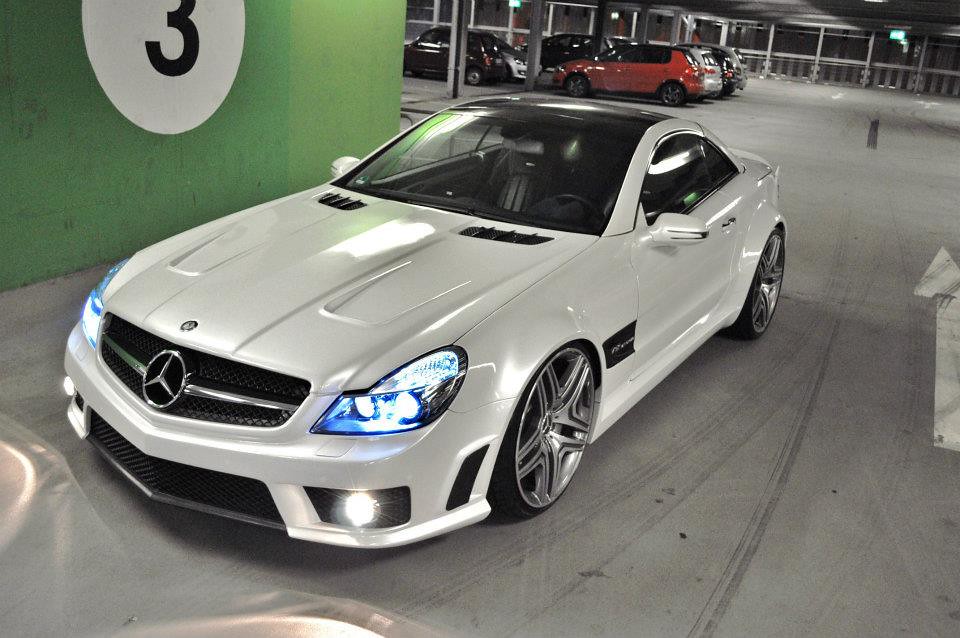
13. **Mercedes SL (1980-2001)**
The Mercedes SL models produced between 1980 and 2001, primarily encompassing the R107 and R129 generations, are unequivocally recognized as some of the best classic cars to acquire as an investment heading into 2025. These grand touring sports cars are perpetually in hot demand, offering a sublime combination of opulent comfort, timeless style, and a driving experience that remains remarkably refined even by modern standards. Their vintage appeal, coupled with the prestige of the Mercedes-Benz brand, makes them an exceptionally strong contender for future appreciation in the collector market.
For decades, the sheer abundance of these models, particularly the R107, meant that prices remained relatively accessible, often leading to a perception of them as merely “old Mercedes” rather than appreciating classics. Some models suffered from perceived complexity or higher maintenance costs, further contributing to their initial undervaluation. This allowed many examples to fall into disrepair or neglect, making well-preserved, meticulously maintained cars increasingly rare and valuable, which is precisely where the investment opportunity now lies.
However, the market is now fully recognizing their inherent desirability. The Mercedes SL has graced roads for over 60 years, securing its place as one of the most enduring and loved classics. According to experts, “Prices for this investment classic car have been on the rise for a while and will likely continue to spike as time goes on beyond 2025.” Starting from a surprisingly accessible range of $12,000-$13,000, these SLs represent an intelligent entry point into a prestigious segment of the classic car market. Their blend of luxury, open-top cruising, and robust engineering ensures their allure will only grow, making them a wise choice for patient investors.
14. **Toyota MR2 (1984-1989)**
The first-generation Toyota MR2, manufactured from 1984 to 1989, effortlessly captures everything enthusiasts loved about 1980s sports cars, instantly cementing its status as an emerging classic. With an affordable investment price tag and sleek, angular styling, this mid-engine marvel became extremely popular due to Toyota’s unimpeachable record for excellent reliability and precision engineering. It presented a compelling package of exotic looks and dependable performance that few competitors could match, making it a standout of its era.
Despite its initial popularity and inherent driving virtues, the MR2 faced a period of undervaluation, often overshadowed by more overtly powerful or iconic sports cars of its era. Its compact size and four-cylinder engine, while contributing to its nimble handling, sometimes led to it being perceived as less substantial than larger, V6 or V8-powered rivals. Furthermore, like many accessible Japanese sports cars, it also contended with a prevalent modification culture, making pristine, original examples harder to come by and often depressing overall market values.
Nonetheless, the market is beginning to fully appreciate the MR2’s distinct advantages. Equipped with independent front and rear suspension, a twin-cam engine, and a precise five-speed transmission, the sports car delivered an incredibly smooth ride and handled beautifully, offering an engaging and pure driving experience. It has long been a favorite among those who prioritize driver involvement and balanced dynamics. This Toyota model has been one of our favorites for a while, recognized for its exceptional handling and responsive character.
Starting from an enticing $4,000-$14,000, the first-generation MR2 offers an exceptional blend of affordability, reliability, and timeless design. Its mid-engine layout, light weight, and rev-happy engine make it a unique proposition in today’s market, ensuring its continued ascent as a highly desirable classic. As modern cars become increasingly complex and isolated, the MR2’s raw, analog appeal will only strengthen its position as a true future investment gem.
**Essential Investment Strategies and Key Market Trends for Savvy Collectors**
As we conclude our journey through these undervalued automotive treasures, it’s imperative to arm yourself with the strategic insights that will truly capitalize on this dynamic market. The classic car investment landscape, while thrilling, demands a thoughtful approach. “The Car Investor” emphasizes three pillars for a successful strategy: focusing on originality, prioritizing naturally aspirated engines, and targeting end-of-era models. These principles serve as a compass for navigating the exciting opportunities ahead.
Originality, above all else, remains paramount. Modified examples consistently underperform original cars across all segments, as documented examples proving factory specification increasingly command significant premiums. Furthermore, the shift to forced induction across the industry makes naturally aspirated engine experiences irreplaceable, with every such performance car facing eventual extinction as emissions regulations continue to tighten. Lastly, astute investors should target “end-of-era” models—cars representing the final expression of particular philosophies or technologies—as these often achieve the most significant appreciation, precisely because they mark endings rather than new beginnings.
Beyond these foundational strategies, several key market trends are actively shaping the value proposition for discerning collectors. Regulatory tailwinds, such as the 25-Year Rule in the U.S. which exempts pre-2000 models from import tariffs, and EU VAT reductions for vehicles over 30 years old, are creating advantageous conditions for cross-border transactions and increasing availability of certain models. Demographics are also at play, with “Gen Z Collectors” increasingly entering the market, and a growing trend of urbanization driving demand for more compact classics like the Autozam AZ-1 or Ford Bronco II, which are perfectly suited for city living.
Car Model Information: 1993 Toyota MR2 Turbo
Name: Toyota MR2
Caption: Second generation MR2
Manufacturer: Central Motors
Aka: Toyota MR (France and Belgium)
Production: 1984–2007
Assembly: Sagamihara, Kanagawa
Class: Sports car
Layout: Rear mid-engine, rear-wheel-drive layout
ModelYears: 1985–2007
Categories: 1990s cars, 2000s cars, All Wikipedia articles written in American English, All articles containing potentially dated statements, All articles needing additional references
Summary: The Toyota MR2 is a two-seater sports car which was manufactured and marketed by Toyota from 1984 until 2007 over three generations. It was the first Japanese rear-mid-engine, rear-wheel-drive production car and was sold around the world. The first generation (W10) was produced from 1984 to 1989, the second generation (W20) from 1989 to 1999, and the third generation (W30) from 1999 to 2007.
Conceived as a small, economical and sporty car, the MR2 features a straight-four engine, transversely mounted in front of the rear axle, four-wheel disc brakes, and fully independent coilover suspension with MacPherson struts on each wheel.
The name MR2 stands for either “mid-ship run-about 2-seater” or “mid-engine, rear-wheel-drive, 2-seater”. In French-speaking markets, the vehicle was renamed Toyota MR because the abbreviation “MR2” sounds like the profanity “merdeux” when spoken in French.
Get more information about: Toyota MR2
Buying a high-performing used car >>>
Brand: Toyota Model: MR2
Price: $21,499 Mileage: 145,631 mi.
The next wave of classic car appreciation will undeniably favor vehicles that offer irreplaceable experiences over those with mere historical significance. The pure, analog driving dynamics, coupled with the distinctive character of naturally aspirated engines and manual transmissions, are becoming as extinct as carburetors once were, making them highly coveted. Our comprehensive analysis, culminating in these 14 exceptional choices, underscores a fundamental truth: today’s overlooked cars become tomorrow’s sought-after classics. The critical question isn’t whether these cars will appreciate, but rather whether you, as a discerning investor or enthusiast, will act before the broader market fully recognizes their immense significance. Remember, classic car investment requires patience, thorough research, and most importantly, the wisdom to always buy cars you’d be happy to own and enjoy, regardless of their financial performance. True passion, after all, is often the best investment, enriching both your garage and your portfolio.



